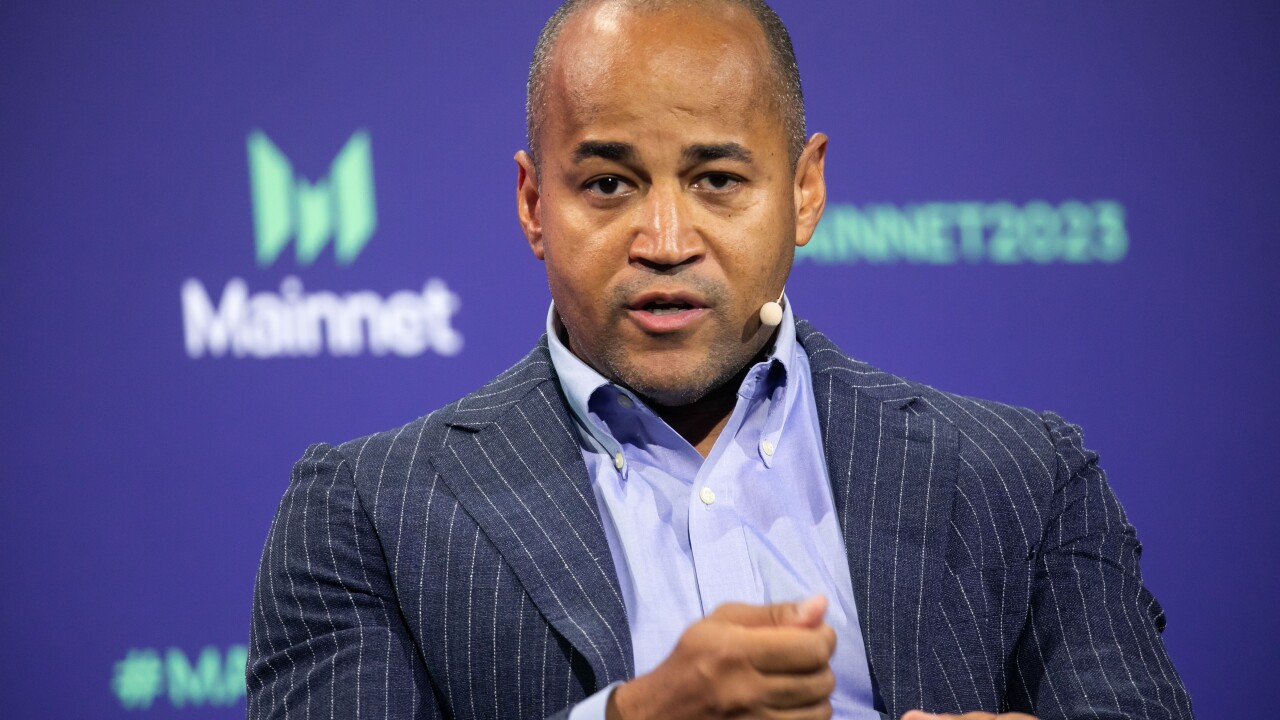More bankers are embracing the notion that a branch's main function is to serve as a billboard.
To that end, BankUnited, Pendleton Community Bank and CNB Bank are among the banks that are looking to make their offices — a hefty fixed asset on the balance sheet — more visible. Marketing opportunity has become a bigger rationale for many newer locations.
While older branches are often unassuming, new designs and locations are being sought to make branches a “beacon” in the community, said Glenn Grau, a senior vice president of sales at consultant PWCampbell in Pittsburgh.
Many new branches feature exterior glass, and banks are lighting their offices up at night. More often, new buildings are being constructed closer to the highway.

“They’re expensive so they want to get the most out of them,” Grau said.
It is a strategy being embraced by a number of banks, which are trying to figure out the future of branches. The entire concept is changing as more consumers bank online, using technology to do everything from applying for a mortgage to depositing checks. At the same time, ATMs meet cash needs, card volumes are rising and more loans are being made online or over the phone.
But physical locations still matter.
“It’s extremely difficult to build market share without a physical presence,” Grau said. “You have people’s money, and if they have a problem they don’t want to call an 800 number and push buttons.”
Cost-cutting is a big factor behind branch transformation, Grau said. Smaller branches can be built at a lower cost, and they require less staffing. Before joining PWCampbell, Grau was a regional manager for Dollar Bank in Pittsburgh at that time when a typical branch required 10 employees.
The typical branch size has been cut in half over the last 20 years, with most locations ranging from 1,500 square feet to 2,200 square feet, Grau said. Many branches can be staffed with four people today.
BankUnited in Miami Lakes, Fla., is building smaller branches in Florida that are also visible from long distances, said Rajinder Singh, the $33 billion-asset company's chairman, president and CEO. The company, with 80 branches in Florida and five in New York, is evaluating customers habits as it pilots smaller branches.
Joseph Bower Jr., president and CEO of the $3.2 billion-asset CNB Bank in Clearfield, Pa., said its ErieBank division has been successful at creating higher-visibility branching in northwestern Pennsylvania.
“People believe we have more locations than we do because of the way we designed the building,” Bower said. “People say, ‘You’re everywhere,’ so it’s been extremely effective.”
The bank has tried to keep that momentum going as it moves into Buffalo, N.Y., Bower said. BankOnBuffalo, another CNB division, recently broke ground for a branch that will include an Internet kiosk in a cafe-style lobby, a free coffee station and open teller areas.
The branch design used around Buffalo is slightly different than the one used in Erie, but the idea of selecting the right site remains imperative. The moves should reduce costs elsewhere because less will be spent on marketing and construction.
“We’re really looking at what a convenience store would look for,” Bower said. “A convenience store wants to see the most amount of traffic go by, not necessarily the easiest in and out.”
More banks are dedicating space in branches for community use. Others are teaming with local businesses such as coffee shops to boost traffic.
Location was front of mind for Pendleton Community Bank in Franklin, W.Va., as management planned the bank's newest branch.
"You certainly need the visibility and to some degree you use them for marketing," said William Loving, the $308 million-asset bank's president and CEO. "The whole function of a branch is changing and will continue to change. It's going to be more of a help-and-assistance resource."
Remodeling is another option.
Deseret First Credit Union in West Valley City, Utah, has been updating is locations in recent years, said Shane London, the $698 million-asset credit union's president and CEO. Deseret First recently overhauled a couple of branches; others will be refurbished in coming years.
The credit union is replacing traditional teller lines with free-standing pods, while adding interview rooms to handle member needs and web conferencing rooms for members to contact specialists that may not be housed in a specific branch. Deseret First has significantly reduced its average branch size, and London would like to see them get even smaller.
Still, London rejected the suggestion that his credit union is adding branches "simply to serve as some type of billboard," given the expense of adding locations.
"Instead, I believe that most of them are repurposing their facilities to meet changing dynamics," London said.





